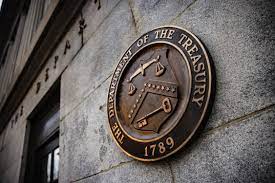The Financial Stability Oversight Council released new procedures on Friday to help identify and mitigate financial system risks. The council also offered guidance on how to more easily designate non-bank financial organizations for regulatory oversight.
Just over a month after the failure of two regional banks posed the greatest risk of contagion since the 2008 financial crisis, the multi-regulator council tasked with keeping track of stability risks in the financial system put forward the recommendations for debate in the open.
US Treasury Secretary Janet Yellen has raised concern about non-bank financial institutions such as pension funds, hedge funds, and private equity firms due to a lack of oversight.
The financial system is still healthy, she noted in remarks at the FSOC conference, but “we continue to be vigilant and monitor conditions closely.”
However, Yellen noted that the volatility in the banking sector demonstrated that supervisory and regulatory improvements are required “to help prevent financial disruptions from starting and spreading in the first place,” and that the “work is not done” by financial regulators.
The ability to identify non-bank corporations as systemically important was provided to FSOC, which was led by Yellen and included Federal Reserve Chair Jerome Powell and the heads of other significant financial regulators. However, in 2019 due to changes made under the Trump administration, this became more challenging.
In order to designate non-bank enterprises, the new advice removes some “inappropriate hurdles” and replaces them with a procedure that enables organizations that are being reviewed to interact with authorities in a meaningful way.
Todd Harper, chair of the National Credit Union Administration, called the designation process for 2019 “an overly drawn-out and Rube Goldberg-like process with various hurdles for doing so.”
This new guidance, which we are announcing today for public consumption, significantly improves the procedure. Clarity, credibility, balance, and consistency are crucial qualities, he added.
However, a US Treasury official told reporters that the new guidelines did not entirely reinstate the Dodd-Frank banking reform law’s original 2012 regulations.
Risks and Weaknesses
According to a Treasury fact sheet, the FSOC’s proposed new risk assessment framework intends to improve the council’s capacity to manage financial stability issues by examining a wide variety of asset classes, institutions, and activities.
These comprise counterparties, payment and clearing systems, and financial entities such as banking institutions, broker-dealers, asset managers, investment firms, insurers, and mortgage originators and services. They also include markets for debt, loans, short-term funds, shares, digital assets, and derivatives.
The new framework also lists the weaknesses that the FSOC and its member authorities would take into account when assessing possible stability threats. These include market connectivity and concentration, leverage, liquidity risk and maturity mismatches, operational hazards, and risk management practices.

















